
The most powerful word “Recycle” to save the modern world and environment was 1st conceptualized by a young dynamic American graphic designer Gary Anderson. Paper recycling is an important part of sustainable development. It reduces the use of natural resources and conserves energy while saving money and reducing climate-changing carbon emissions. All paper products can be recycled effectively – newspapers, magazines, cardboard boxes, office papers, and more. The key to a successful paper recycling program is getting as many people as possible involved in recycling their papers. Know how paper recycling benefits the environment proper ways to recycle papers and also how we can recycle papers at home.
What is paper recycling?

Paper recycling is the process of converting waste paper into new materials. The most common products made from recycled paper are cardboard boxes, tissue paper, and office supplies such as copy paper, envelopes, folders, and file folders.
Recycling can all be accomplished by collecting your used papers at home or at work and delivering them to a local recycling center where trained workers sort through them for recycling purposes. When you recycle your old newspapers into new products like newspaper bags or packing peanuts for shipping packages, you help reduce pollution by preventing excessive amounts of waste from entering landfills as well as reducing energy use related to manufacturing these items with virgin materials instead of recycled ones (it takes less energy to make these items out of recycled material).
Also Read :- Why we should Recycle?
Why do we recycle paper?
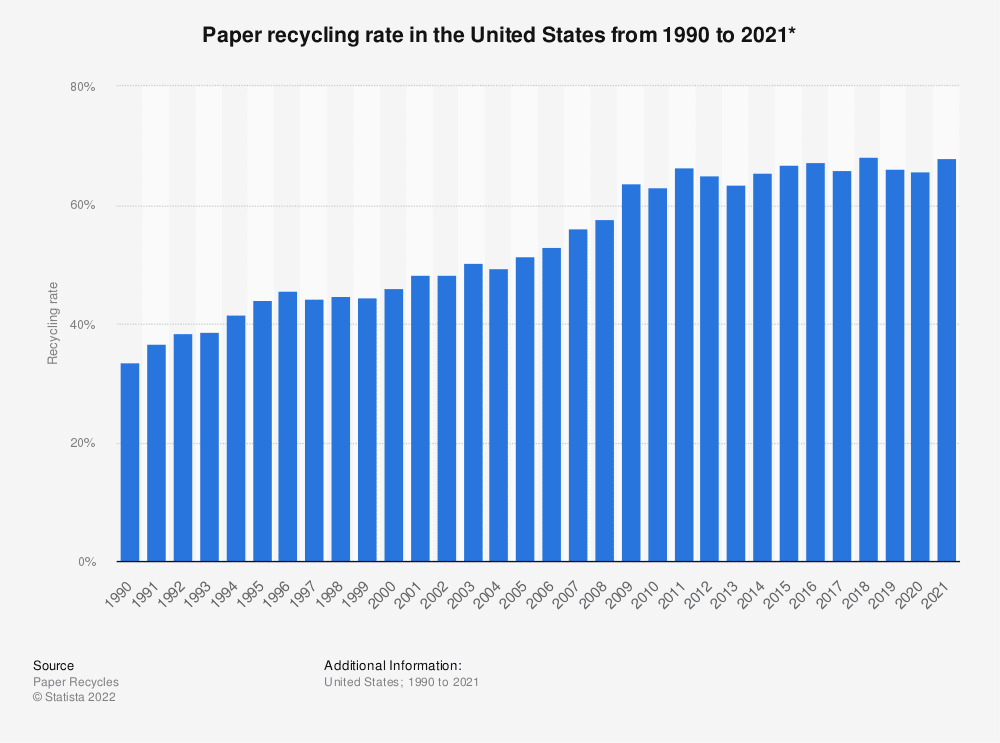
You may be wondering why we are trying to recycle paper. The answer is simple: trees are a renewable resource!
Trees have been around for centuries and will likely be around for centuries more. Since trees can grow back after being cut down, they are considered a renewable energy source. However, if we don’t take care of our forests and allow too many trees to be taken down every year, then this source will become scarce and non-renewable.
When it comes down to it, recycling paper is good for both our environment and our economy because it reduces waste disposal costs while making money from those who buy recycled goods. Paper recycling saves the environment by reducing the carbon footprint on nature. It also keeps natural resources from becoming depleted by using them up quicker than they can replenish themselves through growth or photosynthesis (when sunlight turns carbon dioxide into sugar).
Benefits of Paper Recycling to the Environment

Paper recycling is a great way to help the environment and reduce carbon emissions. Paper recycling saves money, natural resources, and landfill space. Plus, it protects wildlife and reduces greenhouse gas emissions.
When you recycle paper:
- You prevent raw materials from being used up or mined for new products (saving energy).
- You save money on landfill space (reducing pollution).
- You protect wildlife by reducing demand for virgin forests or woodlands (cutting down on deforestation).
- You cut down on greenhouse gas emissions that contribute to climate change.
Conserving natural resources

Recycling paper helps conserve natural resources. Paper is made from trees, which are a renewable resource. The more we use, the more we can use again and again. When you recycle your paper, you’re not wasting it—you’re taking it apart and making something new with what you’ve got.
In addition to saving trees, recycling also preserves other natural resources like water and energy. Recycling saves up to 95% of what would otherwise be sent to landfills or incinerators! This means that fewer forests have to be cut down for paper production (and all the energy needed to run those factories), less energy is used transporting materials around the world, and less water is wasted during manufacturing processes.
Protecting ecosystems and wildlife
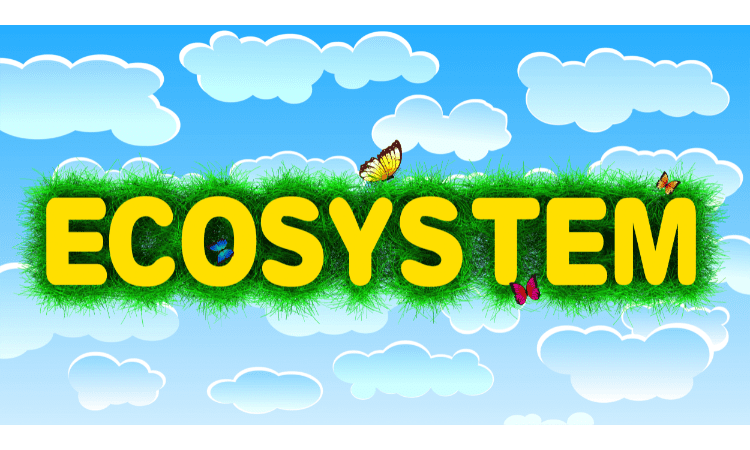
Recycling paper is not only good for the environment; it also helps protect ecosystems and wildlife.
A lot of landfills have been built to house all of our trash, but this can be problematic in many ways. First, these landfills take up a lot of space—space that could otherwise be used to support plants and animals in native ecosystems. Second, they can leach harmful gases into the air or contaminate nearby water sources with chemicals that are dangerous for humans and other living things. Third, if buried too deep or left in one place for too long (like old toxic waste dumps), landfills can cause earthquakes on Earth’s surface!
Not only does paper recycling decrease our need for virgin materials like wood pulp and oil drilling by making them unnecessary parts of manufacturing processes, but it reduces the amount of space needed for these processes as well as landfills themselves.
Reducing demand for raw materials

Reducing the demand for raw materials, energy, water and land is a good thing. Recycling paper reduces the need to mine more natural resources and transport them to processing plants. It also reduces the amount of energy needed to process those raw materials into usable products.
Recycling also helps reduce water pollution caused by runoff from mining activities—this can be especially significant in areas where heavy metals like mercury are used in mining processes or discarded as waste products of manufacturing activities. In addition, recycling paper saves fresh-water supplies by reducing pollution that releases excess nutrients into waterways — nutrients that cause algae blooms which rob oxygen from aquatic life in lakes and rivers!
Paper recycling decreases land use by diverting waste away from landfills where it would otherwise end up buried forever under garbage bags full of coffee cups: this reduces greenhouse gas emissions from decaying organic material (methane) and prevents toxic chemical leaching into groundwater below ground level – both major contributors towards climate change nowadays.
Saving energy
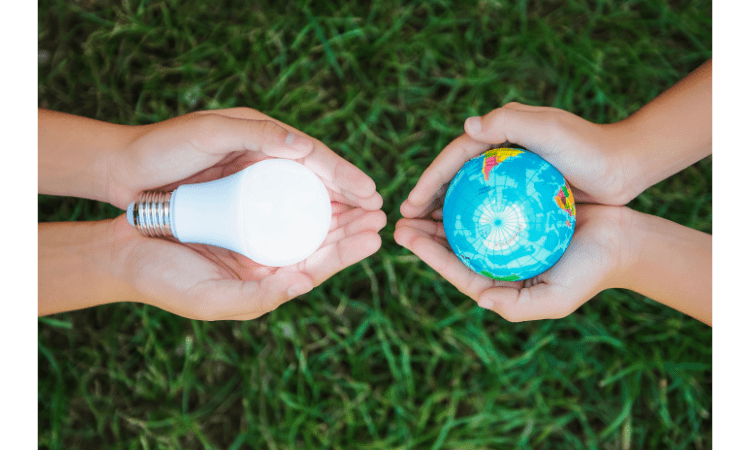
Recycling paper is a great way to save energy. Paper recycling can help reduce greenhouse gas emissions, which in turn helps decrease global warming. When you recycle paper, you are saving trees and reducing paper waste that would have otherwise been thrown away. Recycled paper products also use less energy in their production than those made from virgin material; the fewer resources used to make the product means that less energy is spent on production as well.
Cutting climate-changing carbon emissions
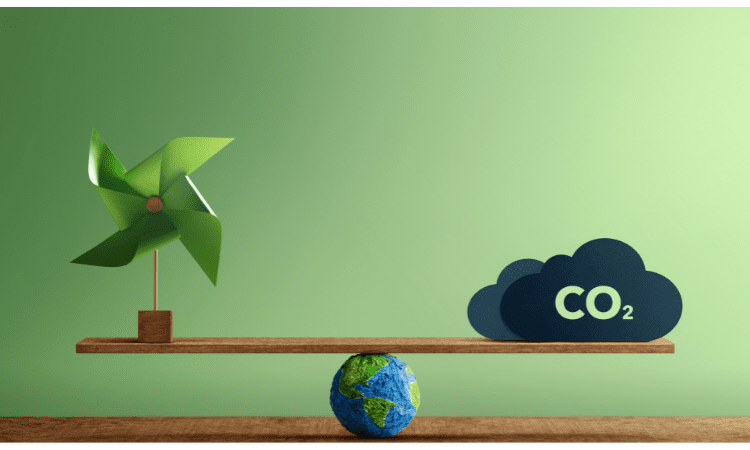
When you recycle paper, you’re not just helping to save our forests. You’re also reducing the amount of greenhouse gases released into the atmosphere.
Reduce carbon dioxide: Paper accounts for 23% of all carbon dioxide emissions from solid waste. When recycled, it can be made into new products that require less energy to produce and use less fuel in transportation. Compared to making paper from trees, recycling saves about 60-70% in energy used and generates 50-60% fewer greenhouse gas emissions over its life cycle (including its processing and transport).
Reduce methane: Methane is a potent greenhouse gas that is 20 times more effective at trapping heat than carbon dioxide (CO2). It’s emitted when organic waste decomposes without oxygen (anaerobically) in landfills or during fires; it’s also produced by animals such as cows or other livestock that eat grain crops like corn instead of grasses—a common practice among large-scale animal farms in North America today because it allows them to produce more meat with less land space than pasture grazing does.
Cheaper than waste collection and disposal
Recycling is cheaper than waste collection and disposal, as well as raw material acquisition, production, and disposal. The average cost of recycling a pound of paper is $0.44, whereas landfill disposal costs $1.06 per pound; in fact, recycling saves money for both consumers and businesses alike.
The reason that recycling costs are less than landfill is that there are many social advantages associated with recycling that can’t be measured financially — environmental friendliness being one example — but the savings on collection fees alone prove its economic value to any business or household looking to save some cash while doing their part for the planet.
Some disadvantages of recycling paper
Recycling paper can be a great way to keep waste from going into landfills, but it does have its disadvantages.
The main disadvantage of paper recycling is that it takes more energy than making new paper from trees. The process involves shredding the paper, washing and drying it, breaking down contaminants like plastic and metal, and then heating the fibers to make them soft enough for use in a machine called a paper machine. Recycled paper is made with fewer chemicals than virgin wood pulp, but it still takes more energy than making new paper from trees.
Another drawback to recycling is that there are some types of paper that cannot be recycled because they are too dirty or damaged. These include food containers, glossy magazine pages and glossy catalogs. Even if they are clean before they’re recycled, they can get contaminated as they pass through the system and end up being rejected by machines at one point or another in production.
Finally, there are environmental concerns about dye contamination when paper comes into contact with other recycled materials during processing. Different dyes used by different companies mean that even though all of their products look similar when they come out of their machines (they’re all white), different colors come out when you put them back together again!
How Paper is Recycled: Step-by-Step Process
Recycling is done either by the paper mills or by external companies that collect and process waste papers. The first step in recycling paper is to sort out the different types of waste papers. Waste papers are then shredded, mixed together and processed into pulp. This pulp can be used as raw material for making new paper products or further processed into other products such as cardboard boxes, egg cartons, tissue paper etc.
Collection & Transportation
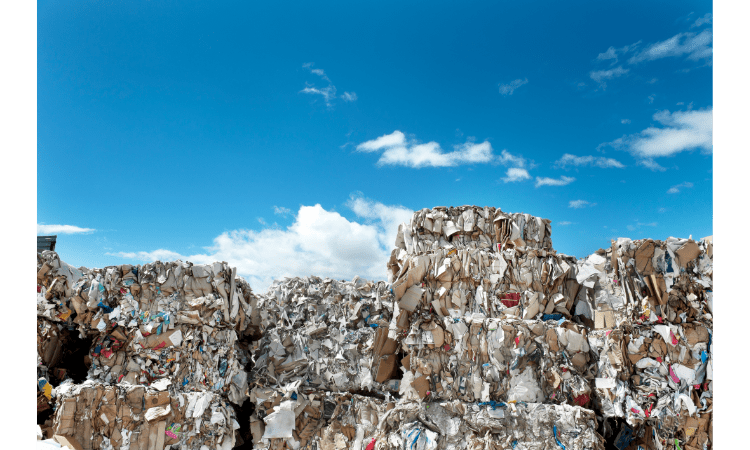
If you’re a business owner or employee, your main concern is probably getting rid of the waste you produce. So let’s talk about how paper recycling works.
The first step in the collection and transportation process is to get it from where it’s being generated to where it can be processed into new products. This can be done through use of trucks, trains or even barges if necessary. These vehicles bring waste paper to processing facilities that will sort and shred them into smaller pieces before separating out valuable materials like cardboard and plastic for reuse. It also separates out non-recyclable items such as food wrappers or writing utensils so they don’t end up contaminating recycled materials during this stage of processing (though some recyclable items may need to be separated manually).
Sorting
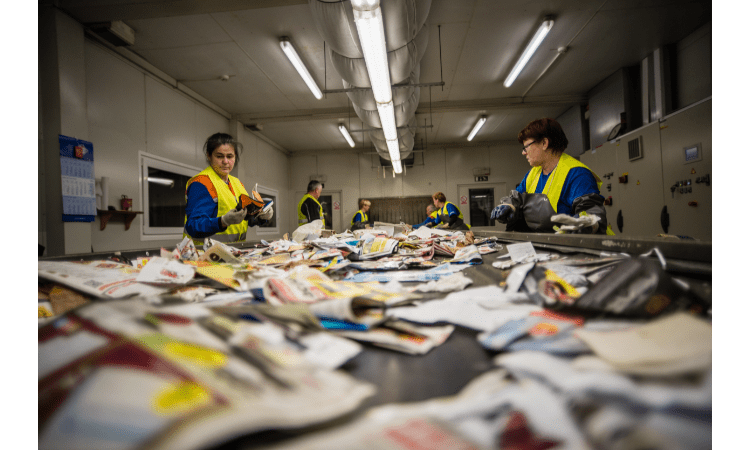
The process called sorting is the first step in the recycling process. It is done by hand, with a sorter, machine or human. It’s important to know how sorting works because it will help you understand what happens to your paper once it’s been recycled and how it can be used again as part of a new product like tissue paper, toilet paper or cardboard boxes.
You can tell if something has been sorted by its quality: recycled products are often quite similar in appearance to non-recycled products because they come from the same source materials (e.g., both types of cardboard will be made using cardboard that was sent through a shredder). However, there are some ways that you can tell whether something has been properly recycled.
Shredding and Pulping
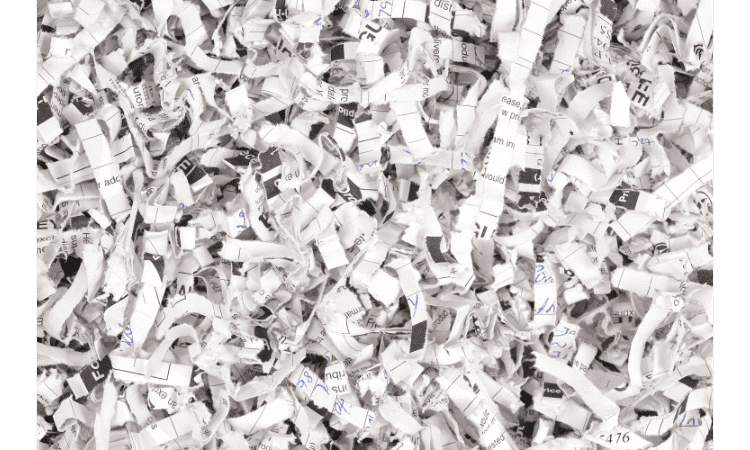
Once you’ve sorted your papers and other materials, they’re ready to go through the shredder in order to be pulped. Pulping is the process of breaking down paper into its basic parts—the pulp that can be made into new paper. During this process, the fibers are removed from the inedible portions of the paper and then regenerated into something useful again: new sheets of writing or printing material.
Screening

Screening is a process that removes contaminants from the paper and recycles it into new products. In this step of the recycling process, a machine called a screen shaker separates the pulp into three categories: corrugated fiberboard (CCF), high-yield fiberboard (HPCF), and low-yield fiberboard (LPCF).
- CCF: The top layer of fibers after screening is known as corrugated fiberboard because it’s used in the production of boxes for shipping and storage.
- HPCF: This lower layer includes more filler than CCF but still has enough strength to be used in many applications such as particle board, insulation or bedding materials like mattresses or pillows.
- LPCF: The lowest layer contains small pieces of contaminants that can’t be recycled into either category above. These scraps are composted so they don’t add to landfill waste.
De-Inking

De-inking is the process of removing ink from paper. This is done either mechanically or chemically. Mechanical methods use a process called flotation, where the paper pulp is separated out and then cleaned with chemicals to remove the ink. The recovered pulp can be sold to make new paper products.
Chemical de-inking uses chemicals that act as solvents on water-soluble dyes, allowing them to be removed from fibres by dissolving them in solution and then separating out these solutions at high temperatures. The resulting material has reduced strength compared with new products because it’s missing some of its natural fibre structure, but it can still be used for many purposes (like making wallpaper).
Bleaching
The pulp is bleached in a series of steps. The first step is to expose the pulp fibers to chlorine gas, which removes any remaining color from the pulp. This process also makes it easier for chemicals called dyes and pigments to be added later during product manufacturing.
Next, the pulp is washed with water and sodium hydroxide (a base) to neutralize any leftover acid and restore its pH level back up toward neutral (7). The process also helps remove trace levels of lignin that were not fully dissolved during the pulping stage.
Finally, bleach manufacturers add color agents to produce white paper goods such as toilet tissue or napkins with bright colors like blue or red.
Rolling
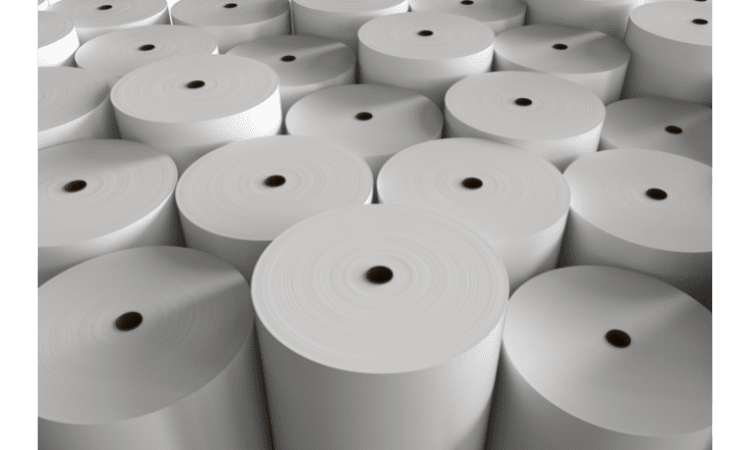
In order to create reels of recycled paper, the large rolls are wound onto a spool. This is done by passing the roll over a series of rollers that wind it around itself in a spiral, similar to how you would roll up a carpet or rug. The end result is two long pieces of spiral-wound recycled paper connected together by an axle in their centers.
The two long pieces are then cut into many small rolls and placed on another spool. This can be done mechanically with large shears or manually by hand with scissors or knives. Once all the small rolls have been cut from one big roll, they can be loaded onto trucks for transport to printing plants where they’ll be used as feedstock instead of virgin pulp materials.
Can we Recycle Paper at home?
Yes, it’s possible to recycle paper at home. You can use your recycling bin to dispose of all kinds of paper products—from junk mail to old newspapers to cardboard boxes.
The first step is to sort your paper into different categories. Cardboard, newspaper and junk mail are all recyclable in most curbside programs.
Second, make sure you only put clean and dry paper in your recycling bin; if you have food or liquids on any of the paper products, they won’t be able to be recycled!
Third, make sure that the weight of your recyclables doesn’t exceed what your municipality allows. If they do exceed the limit, many times you can take them to a drop-off center or event where they will accept more materials than usual!
Conclusion
Paper recycling is beneficial to the environment in many ways. It reduces the amount of virgin fibre needed for new paper products, as well as conserves natural resources such as water and energy. Paper recycling also helps reduce greenhouse gas emissions from producing virgin paper and other materials used in manufacturing processes.
Also Read :- 7 Plastic Recycling Numbers Meaning.











